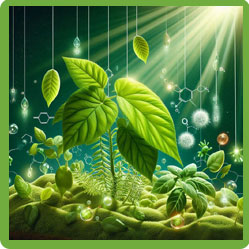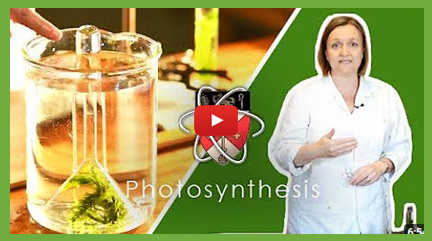
Photosynthesis
Photosynthesis is the process that plants use to make their own food using carbon dioxide, water, and sunlight. It takes place in the chloroplasts of plant cells and produces glucose and oxygen. Explore how photosynthesis works, the factors that affect it, and why it’s essential for life on Earth.
Practicals on this page:
Rate of Photosynthesis
What is Photosynthesis?
Photosynthesis is the process plants use to make their own food. It takes place in the chloroplasts of plant cells, which contain a green pigment called chlorophyll that absorbs sunlight.
Word equation for photosynthesis:
carbon dioxide + water → glucose + oxygen
(in the presence of light and chlorophyll)
Balanced symbol equation:
6CO₂ + 6H₂O → C₆H₁₂O₆ + 6O₂
This process is vital because it produces glucose, a type of sugar that provides energy for plant growth and development, and it releases oxygen, which animals (including us!) need to breathe.
Exam Questions & Answers

Download and print off practice our FREE worksheet with exam style questions on Photosynthesis.
What Is Glucose Used For in Plants?
Plants use the glucose made in photosynthesis in several ways:
- Respiration – to release energy
- Making cellulose – for strong cell walls
- Making amino acids – for protein synthesis (requires nitrates from soil)
- Stored as starch – for use when photosynthesis isn't happening (like at night)
- Stored as fats and oils – in seeds
The Rate of Photosynthesis
The rate of photosynthesis is how quickly a plant can carry out the process. This rate can be affected by several factors. Understanding how to speed up or slow down photosynthesis helps farmers grow crops more efficiently.
Limiting Factors of Photosynthesis
A limiting factor is something that stops the rate of photosynthesis from increasing when it could go faster. The three main limiting factors are:
- Light intensity – less light means less energy for photosynthesis
- Carbon dioxide concentration – low CO₂ limits glucose production
- Temperature – if it’s too low, enzymes work slowly; too high, enzymes can denature
Water is also essential but is less often the limiting factor in controlled environments.
You may see rate of photosynthesis graphs showing how these factors affect photosynthesis. In experiments, you can test how changing one factor (e.g. light distance) affects the number of oxygen bubbles produced.
Artificial Farming and Photosynthesis
In greenhouses, farmers create ideal conditions to maximise the rate of photosynthesis and boost crop yields. They may:
- Use artificial lights to extend daylight hours
- Add CO₂ (e.g. from heaters)
- Keep the greenhouse warm and humid
- Use fertilisers to ensure minerals are available for growth
Although these methods cost money, they can increase food production and profits when managed carefully.
Also see Respiration, Cell Biology
PRACTICAL - Rate of Photosynthesis
In this required practical, you’ll test different food samples to identify key nutrients: starch, sugars, proteins, and lipids. Each test uses a different chemical:
- Iodine for starch (turns blue-black)
- Benedict’s solution for sugars (turns brick-red when heated)
- Biuret solution for proteins (turns purple)
- Sudan III or ethanol for lipids (red layer or cloudy emulsion)
This practical helps you learn how to safely carry out chemical tests and understand what different food types contain.
Revision Notes

The Cornell method is like a supercharged note-taking system that helps you ace your revision!
Print out our blank revision notes pages to help you revise.
How to make effective revision notes with the Cornell method.



